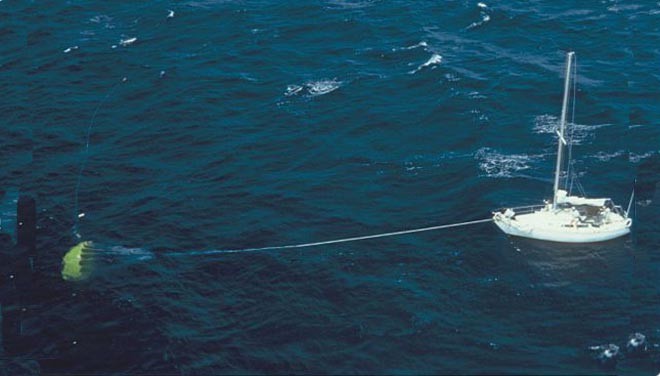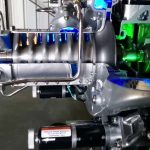● 
A dynamically positioned (DP) drillship operating in the Gulf Of Mexico prepares for an approaching hurricane. They secure the oil well, chain the deck cargo and fly all non-essential personnel to the “safety” of dry land. They are prepared and running from the storm at full speed ahead but are they out of danger? Considering the average drillship is capable of a max transit speed of less than 12 knots, how far away from the hurricane can they get?
The answer is always, not far enough.
Now these ships are designed to ride with the bow into the swell and the DP system is designed to prioritize vessel heading over all else, including forward propulsion. This is a good thing because waves hitting against 138 feet of steel, the beam of a new drillship, puts the lowest possible load on the power and propulsion systems. It also applies it’s energy to pitch, rather than roll, the vessel. The problem is, what happens if the DP system fails or a large wave knocks the bow off heading?
At this point the waves hit against a 750 foot steel wall, the full length of the ship, forcing it to roll heavily and putting significant strain on the power systems. Loose propulsion completely and the ship naturally sits perpendicular to the forces of wind waves and current… a dangerous situation for the people aboard this, now heavily rolling, ship.
Miko Marine has new and interesting, potentially lifesaving, technology that addresses the problem. New technology applied to an age old idea, the use of a Sea Anchor. Miko Marine explains:

A vessel in drift represents a serious thread to life and environment. The time required for a salvor to reach the casualty and to attach a towing line is essential for the result.
Miko’s integrated Sea-Anchor provides increased chances for a successful salvage operation. The combination of a sea-anchor (with diameter up to 15 meters), the synthetic fibre towing line and the pick-up buoy solution provides the salvor more time and when in place, a fast and secure way to connect and start the tow.
The Sea-Anchor may be used as a “stand alone” product, in combination with Emergency Towing Systems for tankers, or in combination with MiCon as presented earlier.
The self-inflated sea anchor is activated in the sea when the anchor reaches a predetermined depth. Before deploying, a “pilot-anchor” drags the anchor away from the vessel. The anchor reduces the drift speed and allows the salvor up to 5 times longer time to reach the casualty.
The particulars of the Sea–Anchor are adjusted to optimize the effect to:
1. Increase drag force to reduce drift speed by up to 80 %.
2. The bow of the vessel will be heading towards the environmental forces from wind, waves and current, hence reducing exposed area and motions of vessel.
3. The tow-line – sea-anchor combination attached to a pick-up buoy will allow the salvor to – efficiently and safely, pick up the tow and start towing the casualty into safe haven.


